Text
Returning Home
I have been back home for about ten days now, and the transition has been easier than I expected. When I have left the country for a long period of time in the past, I have experienced some type of culture shock. Whether it was in the grocery store being overwhelmed by the number of cereal options we have or driving for the first time in a while, I usually experienced some type of shock to my system that made me realize that I am not in a new and exciting place anymore. I am back to reality. My theory why this time is different is that I made lifelong friends while studying abroad that I know for a fact I will see again one day. And when I see them again, my experience of studying abroad will live on in the stories and jokes that we share. Nevertheless, as I am waiting to board my flight back to Oregon State after being home in Texas for the holidays, I have a feeling that new emotions and feelings will be coming my way as I am completing the process of leaving my second home in Cork and my real home in Texas.
Reflecting back on my experiences, I can’t help but feel so grateful for the fact that I even had the opportunity to have them. From the new countries that I visited, to the various villages that I got to trot around in in Ireland, I have memories that will last. I am sure that this will not be my last time in Ireland, and this will definitely not be my last time in Europe. The different cultures and ideas opened my eyes and my heart, and will forever change the way that I view other people and experiences.
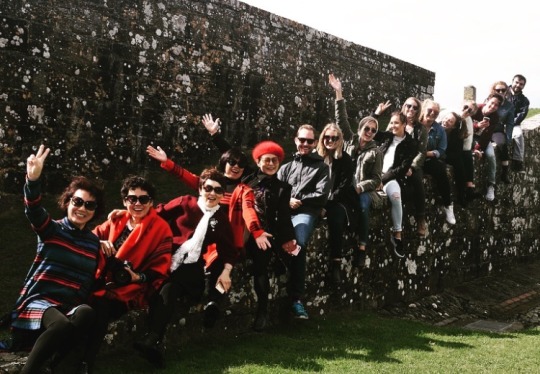
Our group having a blast with some other tourists
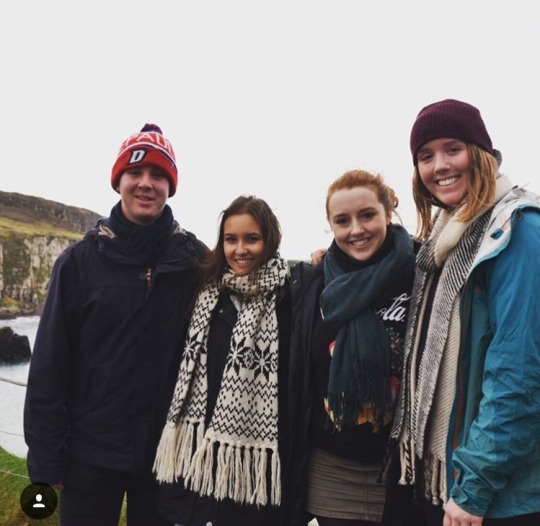
My last trip while in Europe to Northern Ireland!

Our final get together as a whole group!
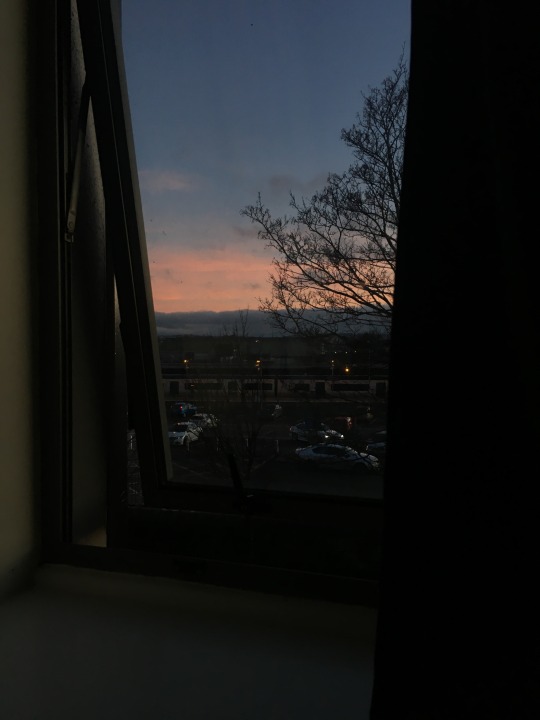
My final sunset in Cork!
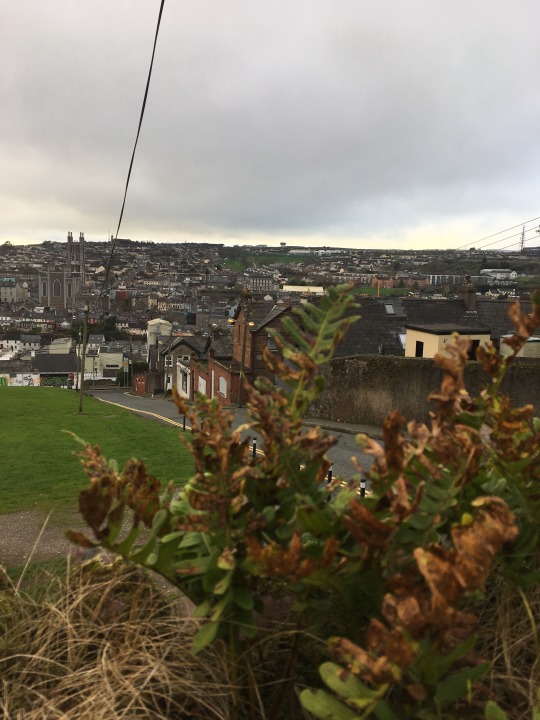
The view from St. Patrick’s park. You have to walk up a whole bunch of stairs to get this view, and I waited to see what was above on my last day in the city
0 notes
Text
Time Flies
So I cannot believe that my time here in Ireland is almost over. I have enjoyed every second, and will consider myself leaving my second home come December. When I’m not going to class or attempting to get school work completed, I am busy exploring the various restaurants and pubs that Cork has to offer, hanging out with the friends that I’ve been oh-so blessed to have met, or taking long runs along the River Lee.
Looking back at the past few months, I can see how much this experience has affected me. Back home, I tend to stay home more than I do explore. I classify myself as an adventurous person, but when tests and assignments are on my to do list, I often put the adventuring on the back burner. And although I am still taking my classes seriously here, I find that I have less schoolwork during the week, so I have been able to take the adventuring off the burner. I also would label myself as an introvert, so before coming to Cork, I was very worried about meeting new people as it is not one of my strong suits. Through a mixture of getting myself to try new things and being open to different types of people, I can say that I have met a solid group of people that will be a part of my life far past when this experience is over. We had ourselves a Friendsgiving last night with all of the works - turkey, stuffing, potatoes, gravy, cranberry sauce, pie - delicious.
Since my last blog post, I have been able to travel to a few more places around Ireland and the UK. First stop was London where I got to visit Buckingham Palace, Hyde Park, Westminster Abbey, the Parliament Building, and Big Ben. The Queen was even home when we went to the palace! We didn’t see her of course, but I had just finished watching The Crown on Netflix, so I was very excited at the prospect. After London, I went on weekend excursions to places like Galway, Kerry, and the Cliffs of Moher! All of which were amazing and filled with their own unique quarks. See the pictures below of all of these trips.

Weekend Trip to London!
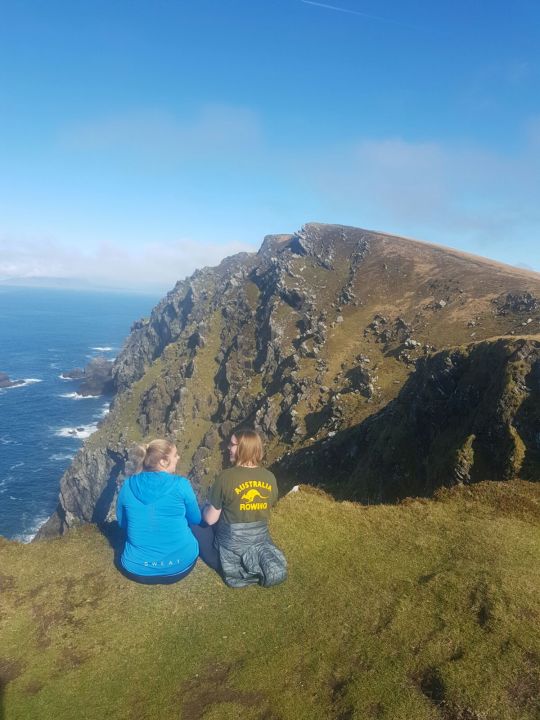
Weekend trip with friends to the Ring of Kerry

Weekend trip with the International Student Society to Galway

Cliffs of Moher!
0 notes
Photo




First Impressions and Future Expectations
So although I’ve been in Ireland for nearly a month and a half now, I have been in Cork for officially three weeks today. After spending time with family in Dublin and heading back to my internship site from last summer in County Cavan, I am completely settled into my apartment, have a brand new group of friends, and am signed up for new clubs and sports such as the Harry Potter Society and University College Cork Rowing Team. Even though I am pretty used to the Irish way of doing things from my previous visits, Cork City is something new. From the accents to the breathtaking views, the city already feels like home. I have already been to other towns such as Kinsale and Killarney, and I have plans to go to even more such as Dingle, other parts of County Kerry, and Cobh. Outside of Ireland, a few of us have planned trips to London in October and Budapest for the Christmas markets in December.
I wouldn’t call it a struggle yet, but the Irish way of doing university (and most things in fairness) is really different from Oregon State. The professors are more relaxed, you don’t get handed a syllabus or any introductory information on the first day of classes, and your schedule isn’t completely sorted out until the second week of classes. I am so used to having everything organized and set in stone well before your walk into lecture on week one, so I am slowly starting to be content with rolling with the flow.
As I want to be sure to make the best out of my experience here, I have given myself some goals for the next three months.
1. Try something that scares me or takes me out of my comfort zone at least once a week
2. Make a good group of Irish friends
3. Learn the Irish language (I am in the intro to Irish class at the moment, so I’ve made some headway on this already)
4. Take a positive attitude with me wherever I go
5. Don’t miss too many lectures
Naturally, this list could go on, but these are at the top of the agenda. I’m hopeful for my next few months in this wonderful country and amazing city, and I can’t wait to find out what’s in store for me. Tóg go bog é (means “take it easy” in Irish)!
0 notes
Text
A Garden’s Best Friend
They are there for you when the Mrs. is less than pleased with you, when you need a splash of color in a room, and they even have the capability to completely transform your garden. We are talking about flowers now. Not only do they add an extra dimension to your garden in terms of aesthetics but they also bring along a multitude of benefits for your vegetable beds.
1. Reproduction – The flower is the reproductive organ of the plant. It is what (following pollination) produces the fruit or vegetable that we eat. It is also where the seed is produced so that more of the same plant will grow in the future.
2. Food for Insects – The nectar and pollen produced by the flower is what is eaten by many insects who in turn pollinate the flower, which then results in a fruit or vegetable that we eat. Some of the most important pollinators that are attracted by flowers include: bees, wasps, ants, and butterflies. Further, unless you’ve been living under a rock, you know that we are facing a worldwide epidemic involving the loss of bees. Anytime we can promote their health and vitality, the better, and one way we can do that is by planting more flowers.
3. Food for Humans – As already mentioned, the flower produces the fruit or vegetable that we eat. Bees also produce honey as a byproduct of their work.
4. Attract Beneficial Insects – Planting flowers is one main way that you can attract beneficial insects to your garden. These not only include the pollinators that were mentioned above, but also the ones that eat other harmful bugs. Lacewings and ladybugs are two beneficial insects that do just that. Have an aphid problem? Flowers can be a really beneficial tool to control these annoying infestations.
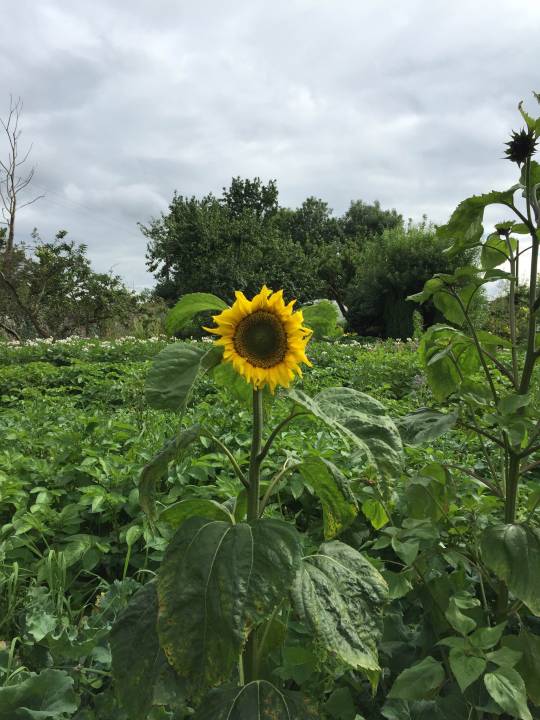
Fun Fact: the common sunflower (Helianthus annuus), a bright, cheerful flower has given us a delicious and hardy seed, a versatile cooking oil, leaves for cattle feed, a stem strong enough to make paper, and of course, much beauty. It has also, as of late, brought us something even more special: the ability to remove harmful toxins from our soil, helping us to more safely handle the earth around us and grow food for ourselves and our communities.The sunflower is one of many plants that are now known to aid in “phytoremediation,” a process that employs various types of plants to remove, transfer, stabilize, and/or destroy contaminants in the our soil, water and air. Compared to other cleanup methods, such as soil excavation or pumping polluted groundwater, phytoremediation has become a clean, cost-effective and environmentally-friendly way to reclaim and reuse land that has been tainted by poisonous chemicals and heavy metals. Because of the heavy metal traces in the soil where I am working at in Ireland, we have sunflowers planted at the beginning and end of almost each and every bed.
1 note
·
View note
Text
Light at the End of the Tunnel
Soil comes in a whole array of types. The basic categories are clay, silt, loam and sand with constant variation within each of these classes. If you have silt or loam soils you are sitting pretty, gardening will be easy and you will love your soil and life. If you have clay or sandy soils, it takes a bit more tender love and care. I have recently had to come to terms with the fact that I must learn to love my clayey soil here in Ireland, and after some research, I have found that there truly is light at the end of the tunnel.
First things first, how do you know you have clay soil? Clay is often reddish in color, water usually is absorbed into clay more slowly, it has a tendency to dry slowly, to clump together (and not want to break apart), and to stick like mud to shoes and gardening tools. It will tends to crust over and crack when it gets dry. This is primarily due to the fact clayey soils are composed of many tiny plate-like soil particles that can compact with time to form a hard, solid mass that makes shoveling difficult and digging holes a bit more laborious.
Forewarning, I am indeed about to go on a slight rant of sorts about soil, so if that last episode of Orange is the New Black is just calling your name more than reading on, thats quite alright, I’ll see you next post. Anyways, a few good things that I have learned about clay soils in gardens are that clay soils are more fertile than many other soil types; each tiny clay particle is packed with places to hold on to water and fertilizer (this CEC or Cation Exchange Capacity, it just means that clay soil can hold a lot of nutrients whereas a sandy soil cannot). So clay soils can save you on watering and reduce the number of times you have to fertilize. This is very important and most gardeners in clay soil are happy to have clay, once they learn how best to garden in clay soil. Furthermore, clay soils provide a wonderful foundation for plants to get their roots into; a lot of perennials and annuals thrive in clay soils since they can get a firm grip on the soil with their roots. This firm grip allows them to survive extremes of temperature and moisture that plants in sandy soil cannot. So with a clay soil you water less, fertilize less, get a better foundation for your plants and extend their hardiness when extremes in weather or other factors occur.
Wait, but isn’t there always a catch? Clay soils aren’t just all unicorns and rainbows, there are some major drawbacks. Clay soil has all those nooks and crannies to hold water and fertilizer, which is great. However, clay soils will hold tight to the bad things too, like salts. Ridding clay soil of extra salt build up or changing the pH of the soil will be more difficult due to the gripping ability of soil particles that make up clay soil. Clay soils latch on to all minerals and this can be good (fertilizer) and bad (salt). In my situation, there are toxic metals in the soil here due to heavy fertilizer application before the Centre was established, so the clay soil is still holding onto those toxins for dear life.
These negative effects can be counteracted somewhat, however. As usual, adding organic matter is always the answer! Adding these things to the soil will make it more difficult for the soil to clump together and harden.
If you have made it to this point in the post, thank you for your perseverance, and I hope that you are walking away with a little extra knowledge.
1 note
·
View note
Text
Life at Jampa Ling
My apologies for not writing in a while! The internet/computer situation over here is strange, so this has been my first chance in a while to get access to my blog. Anyways, things are just swell here. The people are kind and open, and the more I begin to get in the swing of things, the more I feel like this is where I’m supposed to be. The work on the garden is tough, however. I have really been the main person in charge for the time that I have been here due to the fact that the master gardener for the Centre has been away on holiday. It has been a test of my wits and knowledge to try and make actual independent decisions for the garden, while also trying to not step on anyone’s toes and mess things up too much the first week I’m here. The soil here is so different from back home. It is extremely clayey, and since it is constantly raining here, there is no time for the beds to dry out after I’ve prepared them. There is urgency to get things planted and in the ground, so I am forced to just put the starts in and hope for the best. It really has been a game of crossing fingers and toes here. There are two poly-tunnels here where we have different types of lettuces, squashes, beans, and tomatoes, and those seem to do quite well. Overall, we grow things like potatoes, onions, radishes, carrots, broccoli, beans, peas, leeks, chives, strawberries, many different fruit trees, rhubarb, squash, pumpkins, chard, and many different types of herbs and flowers. As you can see from the pictures down below, the garden is just beautiful, and it has been interesting trying to combine the ideas of high crop yield with the idea of keeping the garden aesthetically pleasing. I hope that I will gain the ability to master the vegetable side of the garden, so I can then focus on making the garden a place where individuals who stay at the Centre can go and meditate or just relax. Furthermore, I wanted to share a structure that I just finished building for some of the sweet peas that we just put into the garden. I gathered the supplies for the structure like a true forger in the forest (seriously, I actually went into the forest to gather the wood and bamboo, I truly felt like MacGyver). Sweet peas need something to grow up, so a pyramid-like structure with netting (to be installed later) is the perfect habitat for these little guys. I planted three pea starts in a triangle shape around each leg of the structure, so this will allow the peas to grow up the legs and really thrive. I’ll be sure to post updates on their journey to becoming delicious sweet-peas. I think that’s enough writing for one day, so thanks for reading and I hope to write again soon! Cheers.
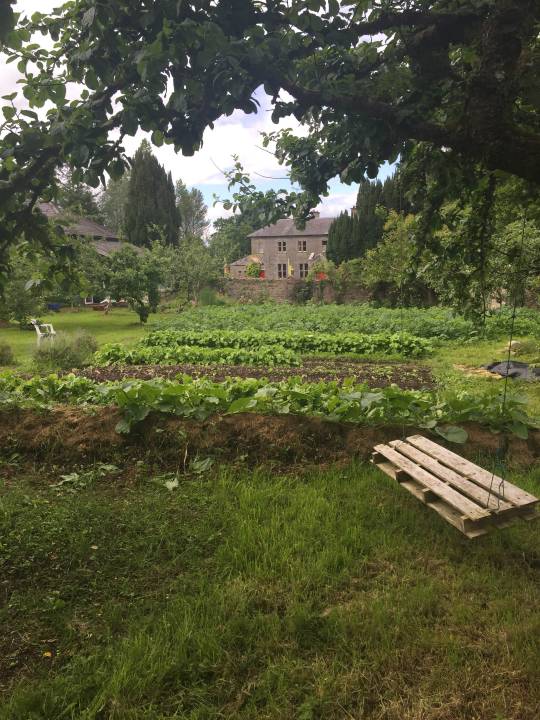
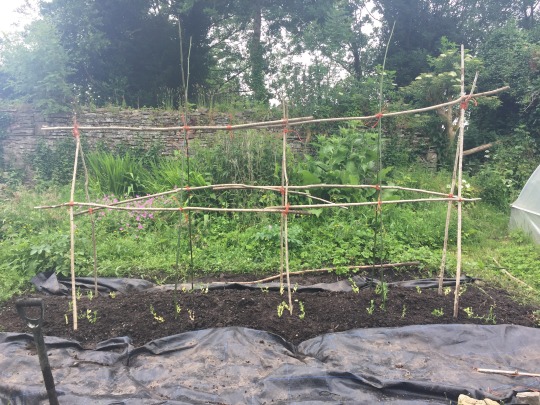
1 note
·
View note
Text
Name that Soil Series!
Wow. Soil names are very different in Ireland. I mean soil names in the US are weird too, but Ireland has names like Gortaclareen, Driminidy, and Tourmakeady (try saying those five times fast). I found a website that resembled the Web Soil Survey website provided by the NRCS, except this site was way less specific when it came to region (i.e. you are not able to choose a specific site or location). You must click on a region and hope that it gives you the data that you’re looking for. In my case, I am going to be staying in a very very very rural area of Ireland called Bawnboy (population 250), but the site provided me with soil information for many more other areas. Nevertheless, it was a good tool to get an idea for what kind of soil conditions I can expect to see in the garden. Furthermore, I can use the data that I researched on each of the soil series the website provided in order to narrow down the specific soil classification for the garden. I’ll be doing another post later about what kind of crops I can expect to be harvesting and planting while on site- stay tuned!
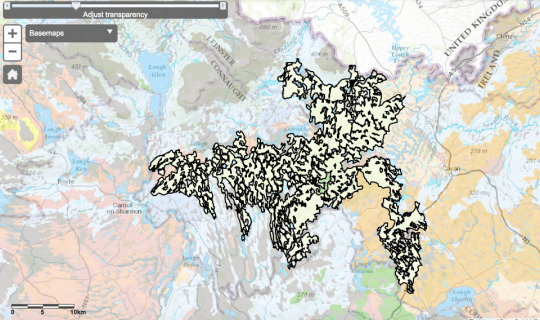
0 notes
Text
A Change in Tempo
I began a journey today. For the next three months, I am going to be living, working, and growing on an organic farm on a Tibetan Monk Montessori in County Cavan, Ireland. This opportunity was presented to me last fall, and it didn’t feel real to me until right now, as I look out of my airplane window, listen to the screaming kid next to me, drinking my complementary Sprite and Cheese Nips. I am an Irish citizen, so I primarily became interested in this internship opportunity due to the idea of visiting family and going back to my roots. Furthermore, I have been doing a lot of work with the Organic Growers Club at OSU lately, so the idea of continuing that meaningful work overseas on a Tibetan Monk Montessori nevertheless truly sealed the deal. When I first heard that I received the position, the first thing I did was (before ecstatically calling my mom of course) was begin my research on Tibetan Buddhism. Throughout high school, I learned bits and pieces about the religion; however, I knew Tibetan Buddhism was different, so I desired to know as much as I could before entering this new lifestyle. I purchased literature, asked friends that grew up surrounded by the religion, and really tried to begin some of the basic rituals that I can expect to be doing while at the Centre (i.e. practicing mindfulness in basic daily habits and 10-15 minutes worth of mindful meditation either in the morning or before bed). Thich Nhat Hanh wrote a book that I read that really stood out to me called You are Here. It talks one through basic mindfulness practices in a way that is relatable and calming; his words honestly force you to be mindful while even reading the text in a way that puts your mind at ease and makes you want to use this tool in your everyday life. At one point in the book, he talks about how even the simplest of rituals such as peeling an orange can implement the practice of mindfulness. He writes that before you begin peeling, imagine the orange on the fruit tree, envision the flowers on the tree, visualize the sprouting of the bud, and really acknowledge that this isn’t just a piece of delicious fruit: it is a miracle just like you and me. As you begin to peel the orange, keep this idea in mind and be grateful. Nhat Hanh writes about these actions in a way that makes sense. In our current society, we are so focused on what is happening next, that we forget what we should be cherishing at this very moment. We consume ourselves with television and distractions in order to do our best to forget what is inside of us. Because of this, we create this bad psychological circulation of constant suppression and repression. During my time at the Centre (it is actually called Jampa Ling if you desire to do research yourself), I hope to practice the idea of mindfulness and do some real soul-searching. Once I have Internet access, I am going to do a post on the actual garden at the site and possibly compare Irish/Buddhist/US garden practices. Once I arrive, I am also going to do my best to define the soil type to the best of my ability via ribboning, etc. Stay tuned and wish me luck! Until then.

0 notes
Text
Spreading your Seed via Candy Machines
Cultivating guerilla underground gardening through bright colors. Because every kid wants seed bombs.
Truly, though, I love this project, and that it’s happening in LA, thanks to Common Studio and its project GreenAid to spread indigenous plants throughout the former desert and current urban experiment of Los Angeles.
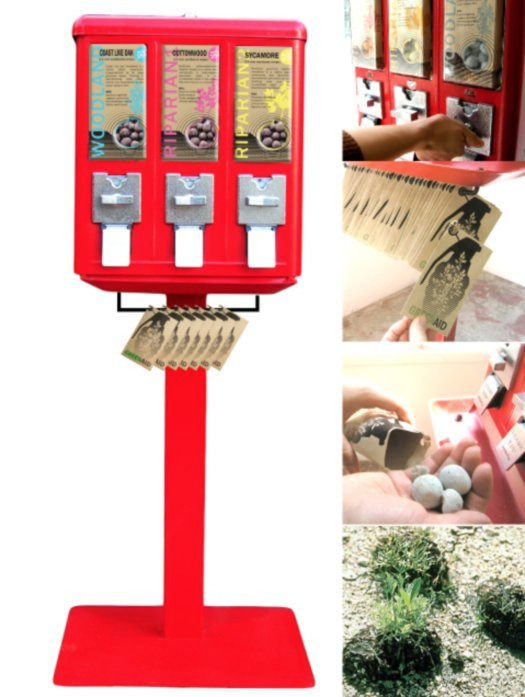
1 note
·
View note
Text
This is Not a Cult!
The OSU Organic Growers Club Farm has been in operation for nearly 16 years, and it holds a very special place in my heart. This shy of an acre farm is based on organic growing principles, and has recently had their berry garden certified organic! The club meets every Thursday and Sunday, and there's always free food, but the real reason why people come out is for the community. Growing things and watching those things progress holds meaning, and one can't help but bond with the folks they are sharing that moment with. Whether you are a Horticulture major looking for field experience or a Civil Engineer looking for a break from homework, the farm serves as an outlet for fun, community, and of course, food. Once you are involved in this group, there's not turning back (hence the extreme title). You learn to love hard work because the people surrounding you make it easy.

1 note
·
View note
Text
And you thought there were only penguins in Antartica...
Although it’s what Antarctica is known for, and they sure are cute, it turns out there’s more on Antartica than just those tuxedo wearing birds.

The polar regions of the globe are often very cold for the most of the year. In the dead of winter, these environments can experience air temperatures well below -50° F! The coldest temperature on record (-128° F) was measured in Antarctica in 1983.
Soils located in polar regions are unique to those found elsewhere, as they contain permafrost (permanently frozen soil). Permafrost is a thick subsurface layer of soil that is frozen year round, making Antartica have the soil order of Gelisol. In Antarctica, during the coldest parts of the year, the entire soil system is frozen solid. Because of this, the soil is actually very dry, like in deserts! If this is true, wouldn’t it be impossible for living creatures to survive there?
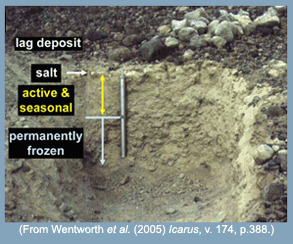
Well...What scientists have found is that there are tiny organisms that are able to survive by living in microscopic films of water that stick to soil particles. The bond energy between water molecules and soil particles is so great that it prevents the thin layer of water from freezing, even at extremely low temperatures. Microbes live in this unfrozen water, which allows them to stay alive even during the long deep freeze of winter.
These microbes aren’t just surviving, either. During the winter, they are still consuming organic matter, “exhaling” carbon dioxide (CO2) and maintaining their populations. They are actually alive!
So next time you think that you can’t get out of bed on a Monday morning, just think about those tough little organisms in Antartica that are making a living in a place colder than your freezer!
0 notes
Text
3 Simple Rules to Follow for a Functioning Organic Garden
Step 1: ADD ORGANIC MATTER!
What is 50400/.3145? The answer is add organic matter. What is the speed of sound? The answer is add organic matter. How many ounces are in a pound? I think you can guess the answer. Organic matter existing on the soil surface as raw plant residues helps protect the soil from the effect of rainfall, wind and sun. Removal, incorporation, or burning of residues exposes the soil to negative climatic impacts, and removal or burning deprives the soil organisms of their primary energy source.

Step 2: ROTATE YOUR CROPS!
Growing the same crop year after year on the same piece of land results in low yields and can dramatically increase productivity on the land by cultivating a sequence of crops over several seasons. Rotations are most effective when combined with such practices as manuring, composting, or cover cropping. Together, these practices create soil quality improvements such as increased soil aggregate stability, decreased crusting of soil surfaces, decrease in crop-specific pests, and increased granular structure and friable consistence.
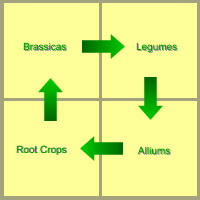
Step 3: LOVE YOUR GARDEN!!
In order to have a functioning, good looking garden, you must put your blood, sweat, and tears into it. Gardens require work, so you must be willing to get on your knees and weed by hand, add organic fertilizer, and make sure that your spacing is correct for the specific crop that you are trying to grow.

Sources:
http://www.noble.org/ag/soils/organicmatter/
1 note
·
View note
Text
Soil Types of Central Oregon
After a long and exciting weekend of climbing at Smith Rock National Park, I felt inspired to investigate the soil history and type of the area. For those of you that don’t know, Oregon is weird. One minute you can be in this green, luscious area filled with Evergreens and rich, moist soils and the next minute you feel like you’re in Breaking Bad, surrounded by tumbleweeds and dry, flakey soils. But that is where the beauty of Oregon remains. The diverse landscape offers a wide range of exploration and analysis for individuals like me who like to find the deeper meaning.
Smith Rock is made up of layers of recent basalt flows overlaying older Clarno ash and tuff formations. Approximately 30 million years ago, a large caldera was formed when overlying rock collapsed into an underground lava chamber. This in turn created a huge amount of rock and ash debris that filled the caldera. That material solidified into rock, becoming Smith Rock tuff. A half million years ago, basalt lava flows from nearby volcanoes covered the older tuff. These sheer cliffs made up of this basalt and tuff are what make Smith Rock the ideal climbing destination.
Below are two pictures. The first is a soil map made from the USDA Web Soil Survey website. Directly below that picture is a table that actually gives that map some meaning, but basically the ending to the long story is that Smith Rock National Park is made up of mostly loamy, mixed, mesic soils. The major soil type of Smith, Haploxerolls, is known for being able to grow winter wheat, barley, dry peas, and lentils. Erosion is a major concern for the use and management of these soils, so that is why if you ever go to Smith Rock, you will see signs that the native vegetation is extremely important in the area in order to prevent erosion.
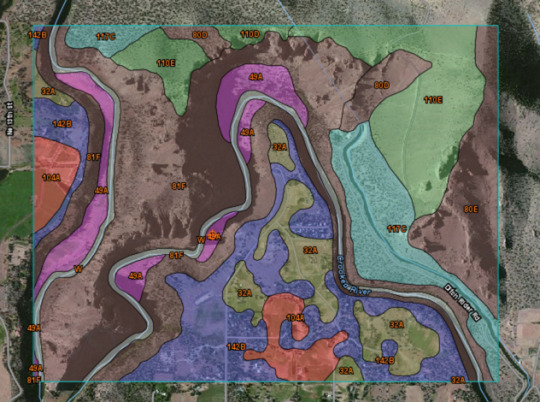
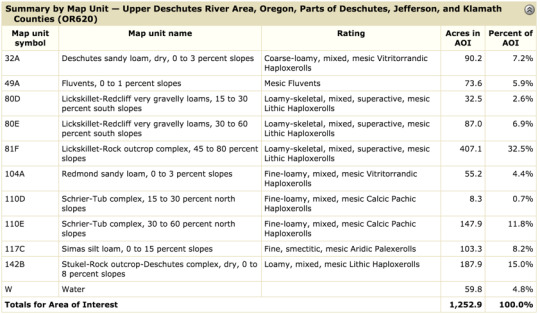
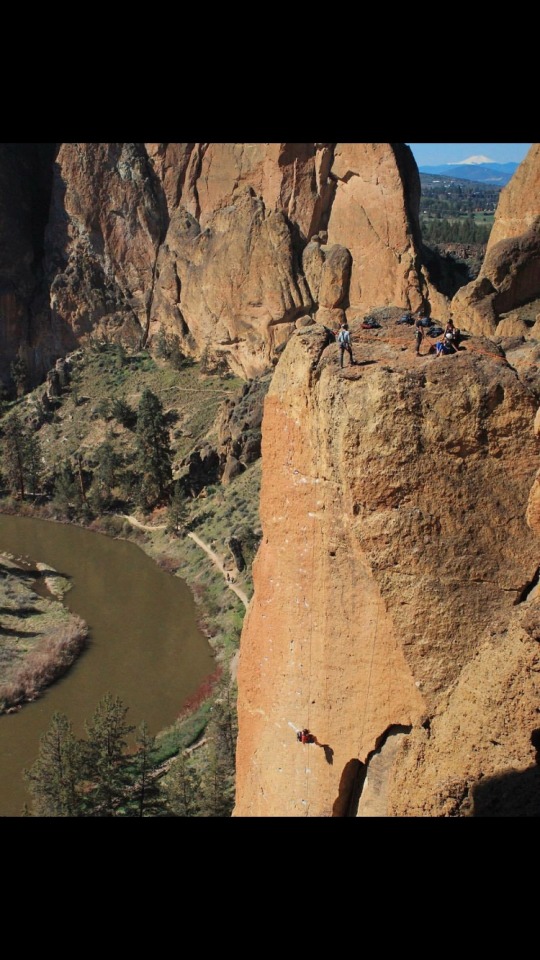
Also, here is a picture of me repelling off of a 150 foot rock face. We climbed at Adit Rock (The Here and Never Found climb, the Parking Lot Crack climb, and others in the area) We also climbed at Student Wall. Finally, the huge repel in the picture is near Monkey Face (I’m blanking on the route name).
Sources:
https://journals.uair.arizona.edu/index.php/jrm/article/download/4730/4341
http://oregonlottery.org/microsites/state-parks/SmithRockBrochure.pdf
https://books.google.com/books?id=FFlEhZm4bWoC&pg=PT136&lpg=PT136&dq=smith+rock+soil+type&source=bl&ots=kDB7WsjBie&sig=TIEQ4dHHOvJOy5phGmp0wLaNrgk&hl=en&sa=X&ved=0ahUKEwjZ-Lqrn4jMAhUI2WMKHU5PB-kQ6AEISTAH#v=onepage&q=smith%20rock%20soil%20type&f=false
1 note
·
View note
Text
Kombucha or Fertilizer?
Hi there folks. I recently learned about this new form of composting material called Bokashi that I would love to share with all of you. Meaning “fermented organic matter” in Japanese, this medium is inoculated with beneficial microbes that flourish in anaerobic, acidic environments, and smells almost identical to the popular tea drink, Kombucha . To prepare the inoculant, a brew that will attract the appropriate bacterial strains is prepared, the host material is immersed in it, and the microbes are allowed to ferment. Molasses provides an energy source for the microbes which reproduce like crazy for several days. Once the fermentation stage is over, the inoculated host can be dried, packaged, and stored for long periods. The bacteria belong primarily to three strains: yeasts, bacteria that produce lactic acids, and purple non-sulfur bacteria. These, or bacteria like them, are the active organisms in yogurt and in silage, the fermented hay that is produced all over the world as a livestock feed. Bokashi can also be added to something called Bio Char in order to be impregnated by the bokashi and create this super concoction that can be used for sustainable waste management. Biochar is charcoal used as a soil amendment and is actually be looked at as an approach to carbon sequestration to produce negative carbon dioxide emissions. Biochar totally has the potential to help mitigate climate change via carbon sequestration. Independently, biochar can increase soil fertility of acidic soils (low pH soils), increase agricultural productivity, and provide protection against some foliar and soil-borne diseases.

The Bio Char

The Bokashi
1 note
·
View note
Text
Lets Start at the Beginning
Hi there folks. I’m a Natural Resource Management Major with Soil Science and Resource Economics minors, so one would say that I’m pretty into the fields of sustainability, environmental policy, and science in general. The goal here with this ‘space of sharing’ so to speak is to not only inform others on the fields of soil science, horticulture, natural resource economics, and really anything else relating to the green industry but also to expand my knowledge of these topics as well. So what can you expect to be seeing on this page? Good question. My ‘rants’ will range from general advice for home or large scale gardens and farms, current issues surrounding our world’s natural resources, interesting theories found in the waste production scene (e.g. reduction strategies, composting, vermiculture, recycling, etc.), green economics, ecological restoration, and more. I hope you find this space inviting and informative. Until next time!
0 notes